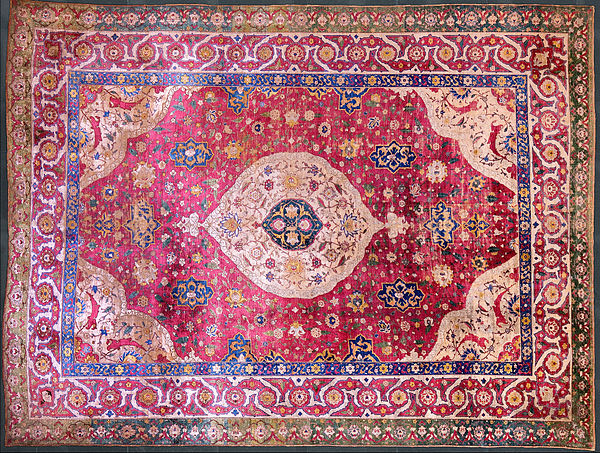
Exploring the Early History of Rugs
20 - 07 - 2020To learn about the early history of rugs, we must look at the early history of humans. Early nomadic cultures were among the first to develop the rug. In the beginning, the rug was used as a practical household item and later prized for its beauty and artistry. Historians assume, based on archaeological records, that area rugs were part of daily life since around 3000 B.C., or before.
The early weavers of handmade rugs were probably the Nomadic tribes people of Central Asia. Nomadic tribes moved from place to place, with their herds of sheep, goats and camels. Rugs provided warmth and comfort, far beyond a surface to walk upon. They served as tent flaps to protect a family from rain and cold winds. They also covered benches and floors, making sitting and reclining more comfortable. They could be used as a table covering or a saddlebag. And when a tribe packed up and moved on, these useful items were brought along with them to their new home.
Early rugs were hand-knotted (in many places they still are.) Cotton, wool, silk and jute are commonly used. The threads are tied by hand and the thread is clipped to form the pile. There are a number of styles of hand-knotting, used in different parts of the world. Rugs made in regions such as the Balkans, the Caucasus, Turkey, Iran, India, China, Nepal, Pakistan and Afghanistan are often known as "Oriental rugs." The pattern and weave of a rug indicates a geographic area and indigenous culture. Certain elements in the design and the use of color also reflect the family or local history of the weaver.
Although it can be difficult to establish and date and origin of early rugs, a large carpet called the rug of Pazyryk is believed to be the oldest surviving rug, dating back to 400 - 500 B.C. Judging from the detail and artistry of this piece, it is clear that rug-making was already an established practice. The rug has approximately 225 symmetrical knots per square inch. It contains pictorial, geometric and floral designs. This exquisite relic was discovered as part of an archaeological dig which began in southern Siberia in the 1920s. It is now housed at the Hermitage Museum in Leningrad.
As civilization changed, so did the world of area rugs. By the 7th century, the rugs were more than just practical household items. Gradually, they became a decoration for the home, and a valuable status symbol. The Crusaders brought carpets and area rugs back from the Middle East and Asia. Marco Polo, as well as other merchants and traders, may have imported the rugs to Italy. In this way, they became popular in many European countries, such as France and England. The rugs are pictured in many Italian paintings dating back to the fifteenth century. They are also portrayed in portraits of King Henry VIII. It became a symbol of wealth and status to own rugs specially commissioned from the Middle East and Asia. A rug maker may need anywhere from a few months to years to complete a rug, depending on the knot count and the complexity of the design. Some of these rugs from the Renaissance period are still in existence and are, of course, priceless antiques.
Handmade rugs have played an important part in human history, serving as a record of cultures, beliefs, artistic creativity and daily life. In early history, they may have been largely functional, perhaps covering a cold, damp dirt floor. But over time they came to be treasured by kings and noblemen, who used them as adornments and valued them for their beauty and prestige.

Photo: The Rothschild Small Silk Medallion Carpet, Iran Mid-16th Century, PUBLIC DOMAIN




